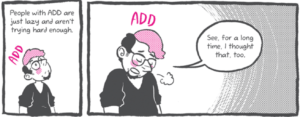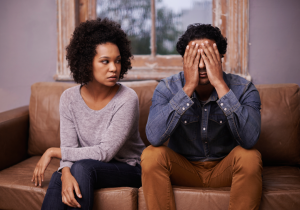The past few years have been a moment of reckoning for those of us claiming to be in solidarity with Black community. The deaths of Michael Brown, Eric Garner, Sandra Bland, Ty Underwood, Mya Hall, and so many others have brought waves of protesters to the streets.
Yet many of us who have our boots on the ground in solidarity with Black community dread the prospect of bringing our anti-racist work home to our parents, siblings, and friends.
Asian Americans have a different challenge than other non-Black people of color when it comes to uprooting anti-black racism. The model minority myth and the criminalization of Black and brown folks in our communities have given many Asian Americans a false sense of honorary whiteness and severed us from building coalition with other communities of color.
Maybe more importantly, the Black community frequently serves as our negative definition – the people we don’t want to be.
We’re told we’re not like “them.” We are the products of hard work and our merit will help us rise high and far from the images of poverty and crime that define Black America.
We’re told imperialism, colonialism, and militarism on the Asian continent have different roots than chattel slavery in America and that these historical oppressions of our people were often “for our own good.”
White supremacy fed us anti-black racism and many of us believe it out of fear – and hope.
So it’s up to us to right anti-black racism in our communities. It’s up to us as Asian Americans to show up for Black community with our family, friends, and kin.
Below are six tips for how to broach these conversations with your family. The last thing I want to do with the following list is create a one-size fits all model for combating racism in the most intimate familial settings.
These conversations are hard. There’s no way around it. And there’s no one way to have them.
The list below is not exhaustive by any means, but it is the result of some hard thinking by community members in various workshops about methods that have worked in small measure. More than anything, it’s a hopeful guide to building coalition. Inch by inch.
1. Keep It Personal – Use Feelings
Try to create empathy. During the Ferguson uprising, I was teaching a seminar on Women of Color Feminism.
A surprising aspect of the class was troubleshooting about how to bring anti-racist work home. Within the specific context of Ferguson, we wondered how we could shift the “vandalism” or “looting” narratives popular in news coverage.
One of my students described a long frustrating conversation with their mother in which they spewed stats, data, and theory about anti-black racism. None of it worked.
Finally they were frustrated enough to ask, “What would make you angry enough to break a window?”
And it worked. At least a little because their mom responded: “If someone hurt you” – which led to a productive conversation about what it might feel like for a community to lose a child every 28 hours.
I admit that, as first, second, and third generation Asian Americans, it can be hard to talk like this with the people we owe our very lives. We’re in a community that emphasizes respect for our elders and I’ve definitely been accused of “talking back” or being “ungrateful” during these conversations because I’m pushing pretty hard.
However, this is exactly how we can frame a discussion with our parents, grandparents and siblings – through the lens of community, responsibility, and love.
By emphasizing our appreciation for the sacrifices our families made and continue to make for us, we can show how painful it might be to lose sons, daughters, and children to racism when you’ve survived damn near everything to get your kid to America alive.
We can ask our parents how they’d feel if their son was Tamir Rice.
Although empathy can be admittedly problematic, we as privileged non-Black people of color can use these kinds of questions to bring rhetoric and media discourse down to a necessary personal level that may resonate with loved ones because, well, they love us.
2. Use Your History
Connect anti-black racism to colonialism and colorism in your community and be aware of trauma.
As a Vietnamese person, I know the aspiration to whiteness is real. It’s a byproduct of French colonialism, which means anti-black racism has the same roots.
Moreover, my mom survived the American War in Vietnam. As a result, I’m always incredibly careful about what I say when it comes to politics and even more careful about how I describe protests.
Violent protests terrify my mom because she’s seen bombed villages. She’s seen self immolation. She’s seen things I can’t even imagine.
But she also grew up in colonialism, so she knows what it’s like to have your language, culture, and humanity devalued.
All of these experiences shape the conversations I have with her. They are the places where I can make connections between things like the school to prison pipeline and colonial education.
Most importantly being cognizant of these histories makes me more aware of her trauma as a colonial subject and thereby effective in conversations about anti-black racism.
3. Get Educated, Know the Numbers
Statistics can come in handy as a way to paint a broad picture of systemic oppression as opposed to minority exceptionalism. I like to have numbers in my back pocket.
For example, the disproportionate number of Southeast Asians and Pacific Islanders who are incarcerated, alongside Black and brown folks, illuminates hyperincarceration and the racialization of criminality.
Studies on discrimination and anti-immigrant sentiment in housing connects white supremacy in all communities of color.
Finally, knowing how the numbers affect Black community specifically, like differential sentencing laws that enable white Americans to escape harsh drug sentencing while poor people of color are incarcerated at alarming rates, or how the ways politicians discussed one person, the “welfare queen” – her name was Linda Taylor – came to pathologize an entire community are key.
We are taught that we, as Asian Americans, are the near perfect minority. It seems like we came to this country out of war, poverty, or simply seeking opportunity and we made it out unscathed.
The thing is, our community includes 1.5 million undocumented folks who live in fear of deportation and detention.
It includes 24 million young women who have been sex trafficked or are living in sex slavery.
It includes people who are incarcerated for the same crimes as Black folks.
And while I’m not advocating an argument in which anyone exclusively takes the, “But Asian’s are criminals, too!” stand, I am advocating painting a portrait of how American racism sometimes means disseminating a controlling image that doesn’t line up with some simple numbers.
A few facts like these can go a long way in debunking some huge myths within anti-black racism.
4. That Pesky Model Minority Myth
It could be helpful to explain the origins of the model minority myth and the ways in which it cleaves folks from building coalition. Perhaps more importantly, that its foundations are dubious to begin with.
I’m a scholar of Asian American Studies, so I get tired of mentioning the same things over and over, but the Page Act was real. As was the Asiatic Barred Zone Act. Both these policies criminalized and stigmatized Asian Americans as undesirable (seriously “mentally or physically defective”?!).
But everything changed in the 1960s and 70s when folks made a concerted effort to secure citizenship by overcompensating and thus creating the highly desirable model minority – a trope that doesn’t quite square with social reality.
There is widespread poverty in most Asian countries: fact. But selective immigration laws in the US favor highly educated immigrants (like H-1 and H1B visas for technically skilled workers), family reunification, and refugees who can be naturalized.
The social image of the model minority alongside biased immigration policy frequently makes it seem as though we have “succeeded” as opposed to other communities of color when the reality is Asian Americans have both experienced historical and contemporary racism at both systemic and interpersonal levels
5. Tailor That Shit
Who is your mom, aunt, uncle, parent? If the fancy numbers, data, or plain ol’ anger don’t work, consider what makes sense with this specific person? What resonates with their story?
Here’s my all-time favorite personal example. Once I was talking to my mom about welfare when she went on a super anti-black racist rant about a time she was in line at the social services office. There was a Black woman in line behind her who she said was “lazy.” Swerve.
The thing is, the only reason my mom even had this story was because she was in the welfare office herself! Collecting a welfare check!
The mental gymnastics required in that moment for my mom to stigmatize someone in the exact same situation as her took her a minute to realize, but when she finally came around to seeing the personal similarities, the tide of the conversation began to shift.
6. Stay the Course, Stay Committed
These conversations are hard. No doubt. And they are of course subject to safety and discretion. And let’s be real, they can suck.
My mom still spouts anti-black racism occasionally. But remember, colonization and slavery took centuries.
It will take at least a few shitty conversations to uproot our internalized versions of them.
If we’re going to build coalitions united in anti-racist struggle, this is the moment and hopefully, these conversations are one way.
***
One of my longest and most effective conversations with my mom challenging anti-black racism was on her birthday. She wanted to watch Lee Daniels’ The Butler. As someone who studies pop culture and race, I generally hate doing this kind of thing with her, but since it was her birthday I relented.
Twenty minutes after the movie I found myself in the middle of what would be a three-hour long discussion about the “welfare queen,” hyper incarceration, and criminality. I tried everything from statistics to personal anecdotes to empathy to get her just to acknowledge anti-black racism exists and is real.
It didn’t work.
But a couple months later I realized she has kind of stopped making any anti-black racist comments. And now they’re even more rare. That is to say…
This is a lifelong struggle.
We as Asian Americans need to come to grips with the fact that a lot of our privileges as residents and citizens of this country come at the expense of Black folks. And while we share a world in which all people of color endure white supremacy, it remains up to us to uproot anti-black racism at home.
[do_widget id=’text-101′]
Kim Tran is a Contributing Writer for Everyday Feminism. She’s also a collective member of Third Woman Press: Queer and Feminist of Color publishing. Her academic and activist commitments are to laborers, refugee and queer communities. She facilitates workshops on uprooting anti-black racism in Asian American communities. She is finishing her Ph.D in Ethnic Studies at UC Berkeley where writes on race, gender and economics. Her work has been featured on Black Girl Dangerous, Nation of Change and the Feminist Wire. She can be found in any of these capacities at www.kimthientran.com.
Search our 3000+ articles!
Read our articles about:
Our online racial justice training
Used by hundreds of universities, non-profits, and businesses.
Click to learn more





















